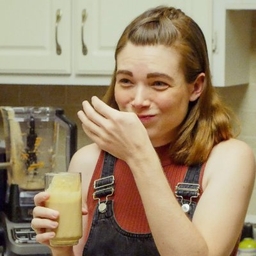
Meghan Cook
Articles
-
5 days ago |
goodgoodgood.co | Meghan Cook
A standard pack of cheese singles contains 24 slices, all individually wrapped in 24 pieces of plastic and packaged again in a larger sleeve. According to a Simmons National Consumer Survey, 30.45 million people eat a pound or more of cheese singles per week — and that’s just in the United States. All of that cheese packaging ends up in landfills and incinerators, adding to the global heap of plastic waste.
-
1 week ago |
goodgoodgood.co | Meghan Cook
During a routine research dive off the coasts of Southern California and Alaska in 2021, Occidental College professor Shana Goffredi scoured the ocean floor looking for methane seeps — deep-sea spots where methane gas bubbles up from the Earth’s crust. After scooping up samples 3,000 feet below the surface, Goffredi and her team took them back to the lab “just to see if there was anything unusual about them.”That’s when they discovered three new species of deep-sea spiders.
-
1 week ago |
goodgoodgood.co | Meghan Cook
The Satyrium semiluna, or half-moon hairstreak, is a small gray butterfly that looks like a moth at first glance. The wildflower lovers are widespread across North America, from the Sagebrush steppe to the montane meadows of the Rocky Mountains. But tucked away in the southeastern corner of Alberta, Canada, another colony of butterflies flaps across the Blakiston Fan landform of Waterton Lakes National Park.
-
1 week ago |
goodgoodgood.co | Meghan Cook
In Malaysia, five islands form Tunku Abdul Rahman Marine Park, a glittery turquoise oasis filled with coral reefs, parrotfish, seahorses, and green sea turtles. Gaya, the largest of the five islands, is also home to the Gaya Island Resort: a luxury 5-star retreat nestled in an ancient rainforest that boasts stunning sea views, swim-up pools, and a spa village hidden amongst the mangroves.
-
2 weeks ago |
goodgoodgood.co | Meghan Cook
In 2019, a beloved African forest elephant named Ousmane was thought to be only one of five to 10 elephants left living in Senegal’s Niokolo-Koba National Park. Ousmane, who was named after one of the park rangers, disappeared without a trace soon after that survey, earning his species the nickname: “Ghost elephant.” That is, until recent trail camera footage caught a rare glimpse of Ousmane walking the fields at night.
Try JournoFinder For Free
Search and contact over 1M+ journalist profiles, browse 100M+ articles, and unlock powerful PR tools.
Start Your 7-Day Free Trial →